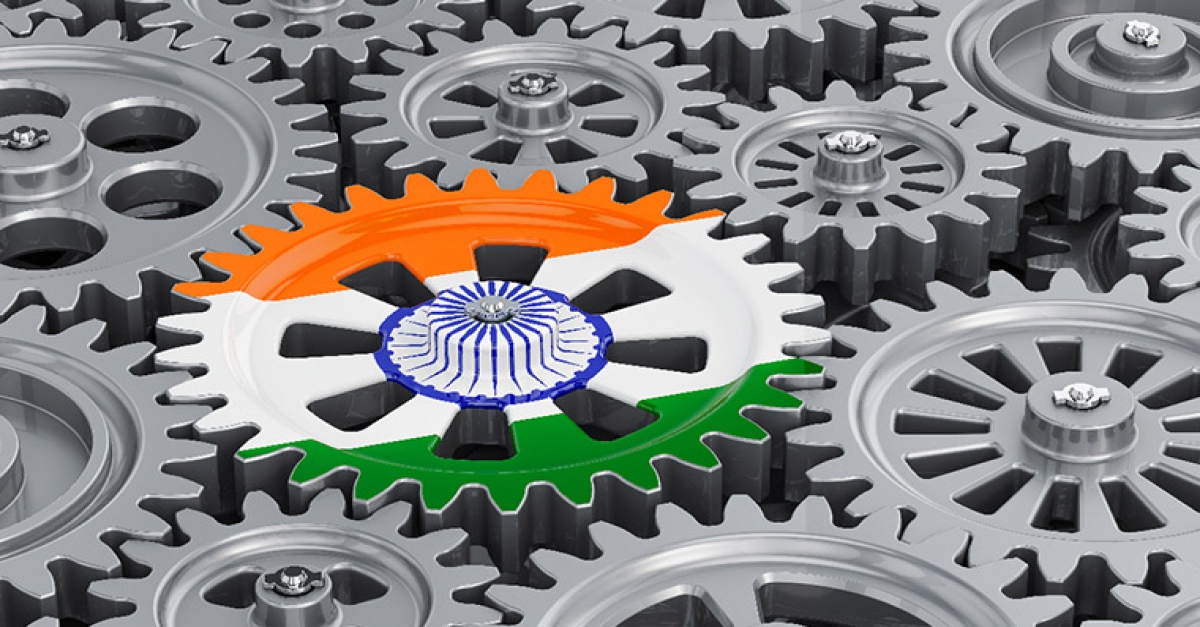
Vedanta says it is keen to team up with a new partner to pursue development of the project – though no names have been put forward as yet – and continues to acquire production licences (for production-grade 40 nm technology, with talks in progress over a 28 nm licence; for reference, the technological frontier set by TSMC and Samsung is 5 nm).
The Indian government considers semiconductors to be of utmost importance, designating the technology as a priority sector. Its most recent budget included a $10 billion package to attract investors through very generous subsidies. Modi had described the tie-up between Foxconn and Vedanta as an “important step”. It seems to have foundered after talks to involve European chip maker STMicroelectronics ran into difficulties. More generally, this failure highlights India’s difficulties in moving beyond hype and developing projects through to a successful conclusion.
“Make in India”: a policy roadblock
Despite the Indian government’s stated desire to open up the country and take advantage of a relatively favourable geopolitical environment, a great many obstacles remain to be overcome. With a strategy that mainly consists of fostering the emergence of national champions in sectors seen as high priority, India is seeking to sell its cost competitiveness – and its “neutral” geopolitical positioning – at the same time as maintaining its home bias.
The upshot is that emerging investors must abide by strict specifications that range from technology transfer agreements to a requirement to use Indian subcontractors. On top of this, imports of intermediate goods – particularly those that could pose a threat to Indian industry – incur prohibitive import duties that are among the highest in Asia.
Lastly, India is not looking to negotiate genuine free trade agreements with the rest of the world, as demonstrated by its refusal to join the Regional Comprehensive Economic Partnership (RCEP), which now represents the world’s largest free trade area by population and GDP. Keen to protect Indian companies, which it knows are not very competitive in export markets except in certain highly specific sectors like pharmaceuticals, India favours slimmed-down agreements that cover just a few offensive interests mainly to do with granting visas to Indian workers, in exchange for which India agrees to reduce or remove import duties on some products (notably Australian coal).
This also explains why talks between India and the European Union have made so little progress: India has absolutely no interest in a “next-generation” treaty that includes ESG criteria based on environmental and social dumping standards in addition to the usual reductions in import duties.
The second structural weakness highlighted by the Foxconn affair has to do with the manufacturing sector as a whole, which accounts for a mere 20% of India’s GDP and 15% of its jobs, compared with around 40% of GDP and 30% of jobs in other countries in the region (such as China, Malaysia and Vietnam). This means that when foreign companies are invited to set up shop in India on the condition that they make use of local suppliers, they are deprived of access to the network of suppliers on which their activities depend, especially in cutting-edge fields like semiconductors.
Above all, India is not integrated into the global value chains to which it is trying to attract new foreign investors looking for opportunities to partially or completely withdraw from China. This is particularly true of telephone and computer manufacturing, which was the subject of Foxconn’s original investment announcement.
India’s growth depends on the development of its manufacturing industry, above all to provide jobs for an ever-expanding working population. To cater for all new entrants to the labour market, the country would have to create some 12 million jobs a year; in reality, the number of new jobs has peaked at around 5 million a year. Every year, another seven million Indians join the ranks of migrant workers, who work in cities and return to their rural homes at harvest time. And employment presents a twofold challenge: not only must India create more jobs but they must also be better suited to women (whose labour force participation rate, already low, has collapsed over the past ten years and now stands at 20%) and less informal.
Foxconn’s decision to pull out of a project that has been much hyped by the government itself, touted as spearheading a higher-level ambition of developing the semiconductor sector, is a big setback for Modi. It is also a reminder that, beyond the hype, the ability to bring investments to fruition continues to be confounded by India’s structural weaknesses, and above all by its highly protectionist behaviour: a closed economy simply cannot integrate into global value chains. But the fact is that there can be no development without industrialisation.
While services have proved to be a key channel for creating jobs and generating value, and continue to balance India’s current account, they have not soaked up all the available workforce or created the formal low-skilled jobs that are vital to development. The Foxconn case should be a wake-up call for India’s authorities and start to convince them that, beyond the soapbox offered by the G20 presidency, they need to take genuine action to open up the country.
“Crédit Agricole Group, sometimes called La banque verte due to its historical ties to farming, is a French international banking group and the world’s largest cooperative financial institution. It is France’s second-largest bank, after BNP Paribas, as well as the third largest in Europe and tenth largest in the world.”
Please visit the firm link to site





